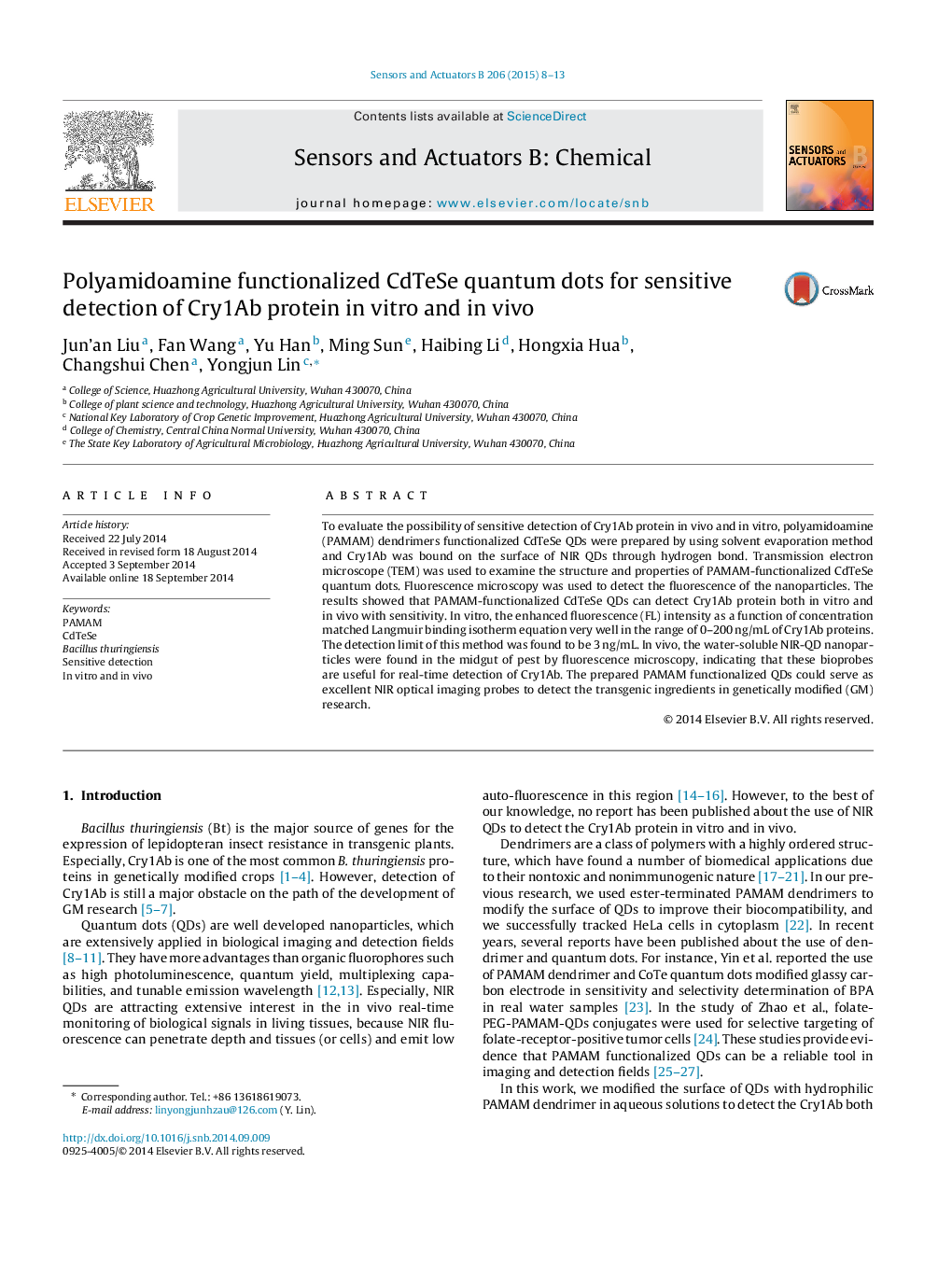| Article ID | Journal | Published Year | Pages | File Type |
|---|---|---|---|---|
| 744334 | Sensors and Actuators B: Chemical | 2015 | 6 Pages |
•Polyamidoamine (PAMAM) dendrimers functionalized CdTeSe quantum dots were prepared by using solvent evaporation method.•The resulting PAMAM-functionalized QDs nanoparticles retain the optical properties of the original hydrophobic QDs.•The enhanced FL intensity QDs with the addition of Cry1Ab protein could be described by Langmuir binding isotherm equation.•In vivo, the water-soluble NIR-QD nanoparticles were found in the midgut of pest by fluorescence microscopy.•The resulting PAMAM-functionalized QDs are found in the midgut of pests under the small animal in vivo imaging system.
To evaluate the possibility of sensitive detection of Cry1Ab protein in vivo and in vitro, polyamidoamine (PAMAM) dendrimers functionalized CdTeSe QDs were prepared by using solvent evaporation method and Cry1Ab was bound on the surface of NIR QDs through hydrogen bond. Transmission electron microscope (TEM) was used to examine the structure and properties of PAMAM-functionalized CdTeSe quantum dots. Fluorescence microscopy was used to detect the fluorescence of the nanoparticles. The results showed that PAMAM-functionalized CdTeSe QDs can detect Cry1Ab protein both in vitro and in vivo with sensitivity. In vitro, the enhanced fluorescence (FL) intensity as a function of concentration matched Langmuir binding isotherm equation very well in the range of 0–200 ng/mL of Cry1Ab proteins. The detection limit of this method was found to be 3 ng/mL. In vivo, the water-soluble NIR-QD nanoparticles were found in the midgut of pest by fluorescence microscopy, indicating that these bioprobes are useful for real-time detection of Cry1Ab. The prepared PAMAM functionalized QDs could serve as excellent NIR optical imaging probes to detect the transgenic ingredients in genetically modified (GM) research.
